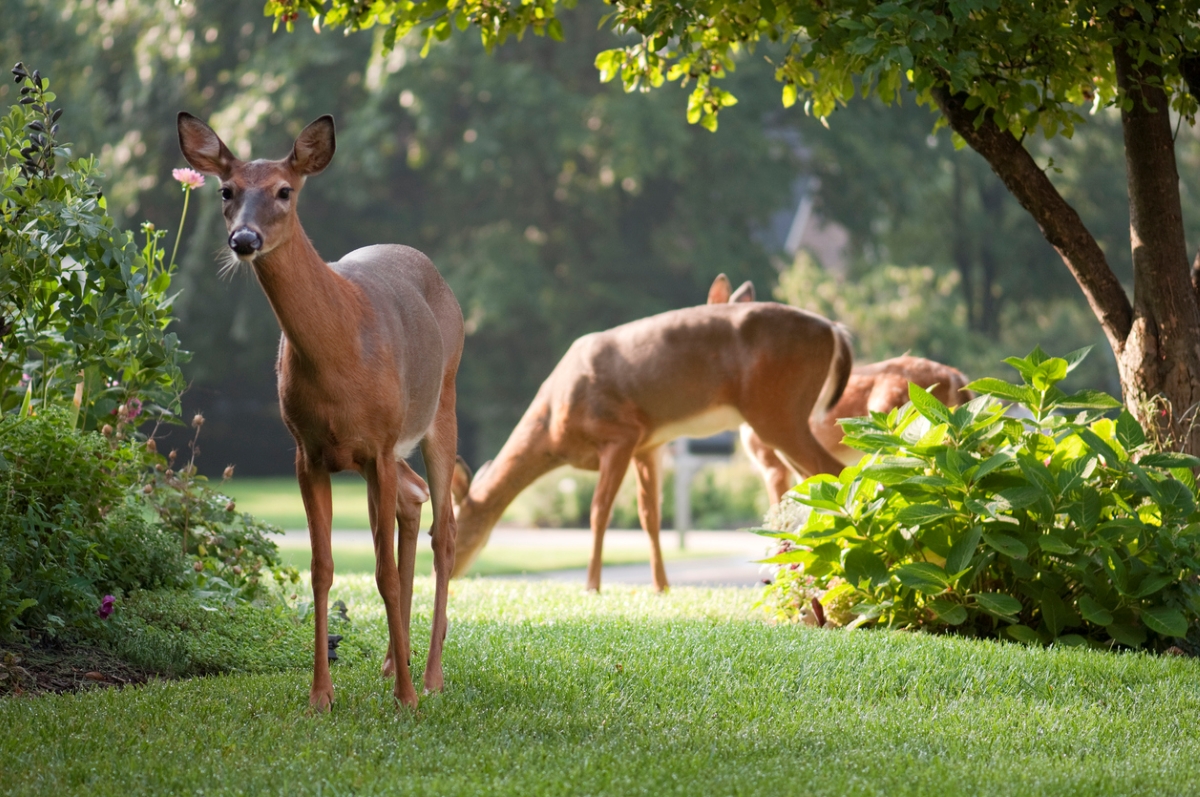We may earn revenue from the products available on this page and participate in affiliate programs. Learn More ›
It takes a lot of time, effort, and money into making your backyard beautiful, so it’s understandably devastating when deer eat your plants, flowers, and trees. While deer may nibble on anything in the garden if they’re hungry, there are some plant varieties that they dislike more than others due to their texture, taste, aroma, or toxicity. Click through to learn about some of the best deer-resistant flowers to plant in your garden.
Deer-Resistant Flowers
Deer often enjoy the soft texture of flowers. Selecting toxic, overly fragrant, or strong-tasting blooms can often be your best bet for deer-resistant flowers. Here are some to look for.
Poppies (Papaver)
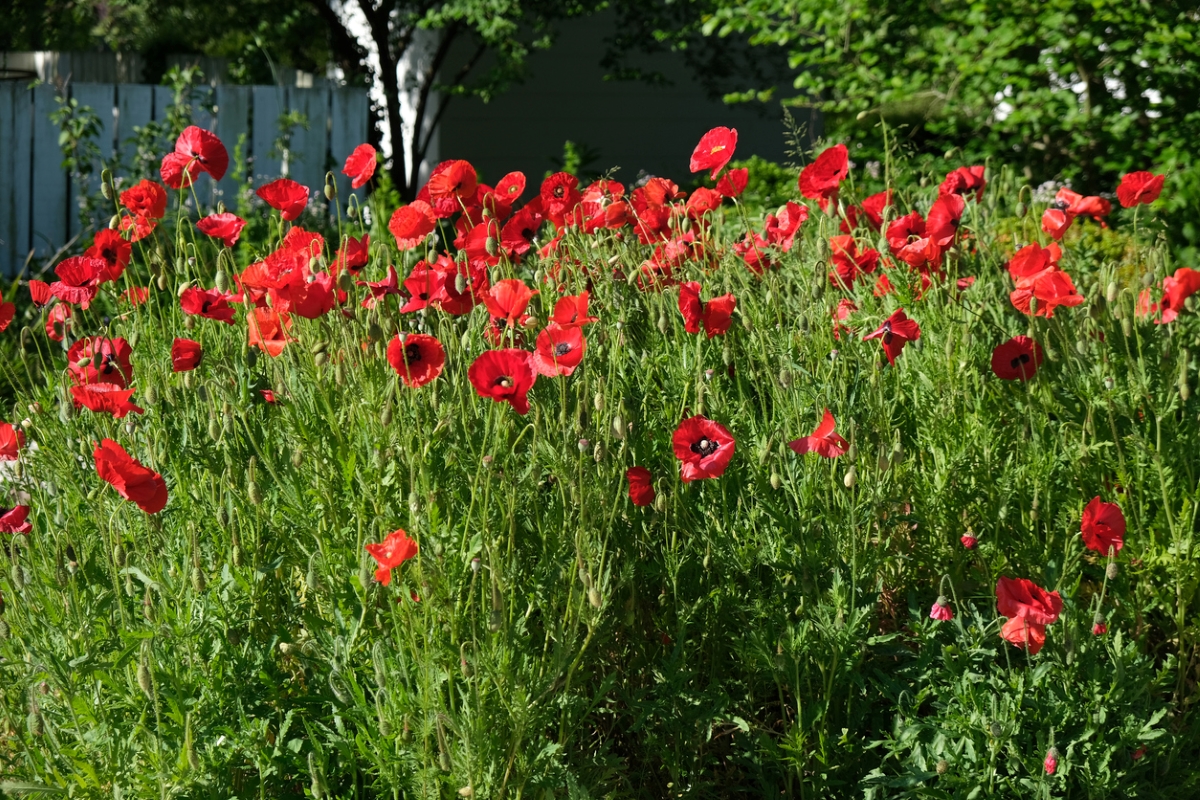
Poppies are dazzling additions to a sunny garden landscape. Deer may bother them once, but will learn to avoid them because they produce toxic alkaloids. The good news is that if a deer eats a bloom, the plant responds as if it was dead-headed. It will likely produce a new flower on the bare stem.
For gardeners who enjoy a vibrant landscape, they come in myriad colors and bloom from early to mid-summer. They’re a favorite perennial for cut flowers; plant some seeds and you can enjoy them year after year.
Catmint (Nepeta racemosa)
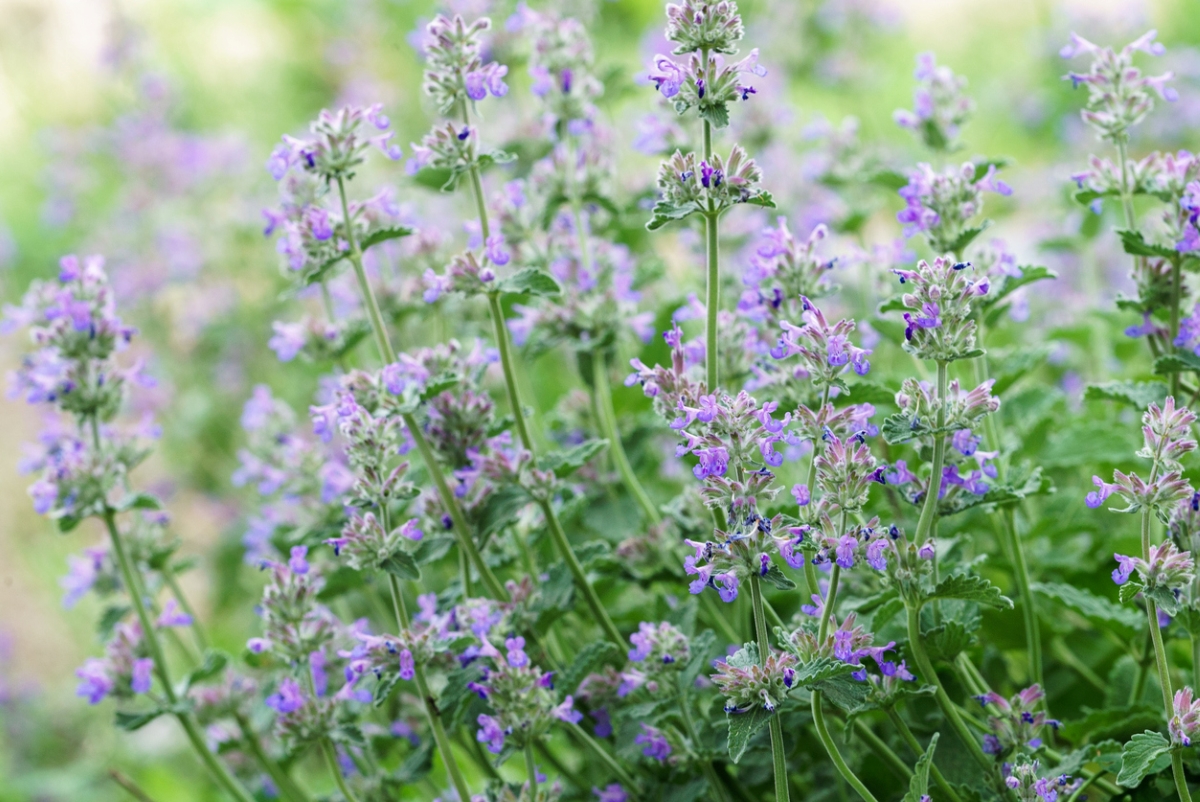
Catmint is a super-hardy deer-resistant perennial that’s also drought-resistant. The reason deer don’t eat catmint is its smell; deer don’t like the aroma of any Nepeta plant. In early spring, when the plant has young shoots, deer may take a taste. However, catmint can regrow.
It’s a standout in containers, beds, or borders in zones 3 and 4. Cut it back hard after that first flush of brilliant purple flowers, and you’ll be rewarded with another bloom before the end of the season.
Daffodils (Narcissus)
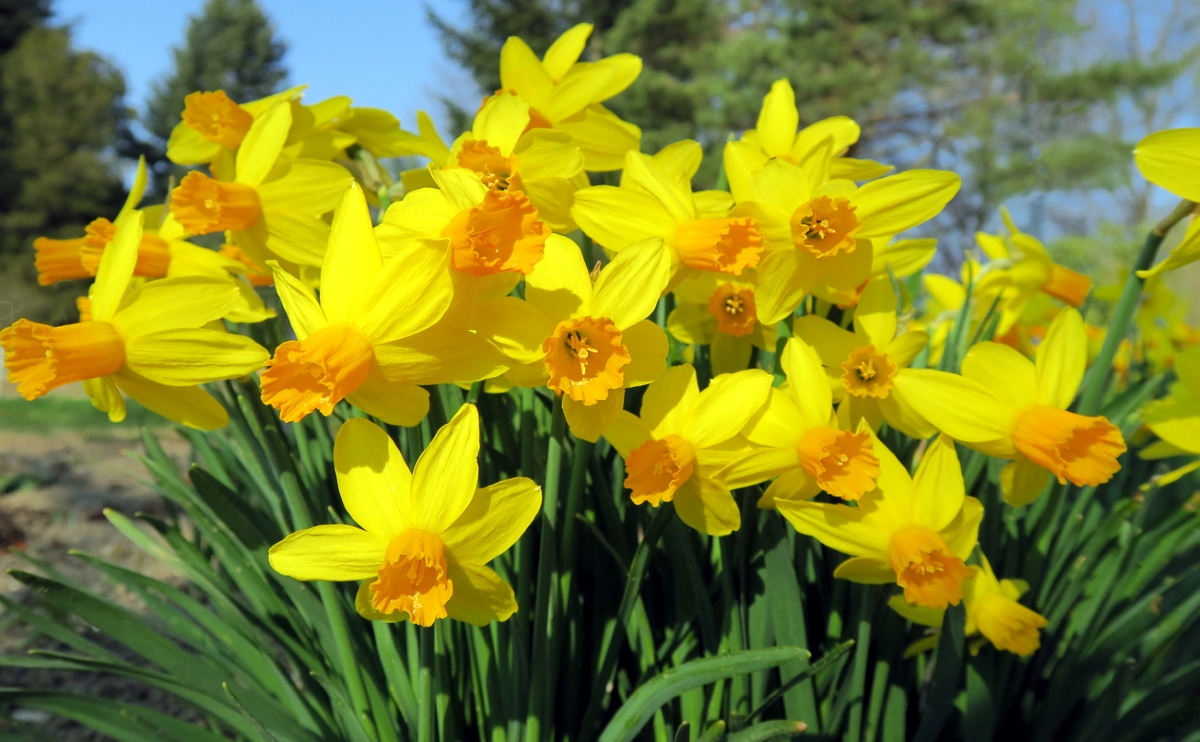
One of the first signs of spring is the sunny daffodil. Deer aren’t as pleased as humans by the plant—they avoid the bitter-tasting and poisonous lycorine found in daffodils.
They are hardy, easy perennials to grow in most of North America. Plant daffodil bulbs in the fall to enjoy beautiful yellow- and white-trumpeted flowers in early spring. With any luck, the deer will gravitate instead to the tulips in your neighbor’s yard!
Garden Sage (Salvia officinalis)
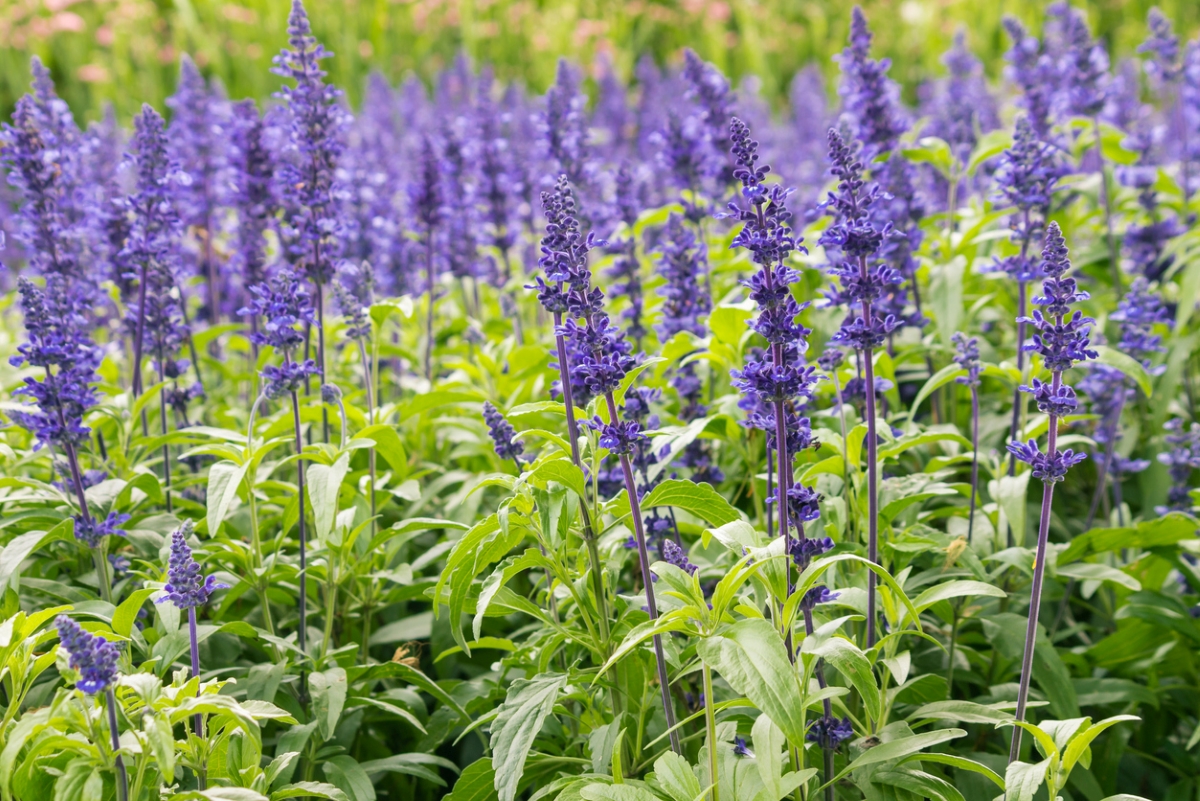
With its aromatic and fuzzy textured leaves, garden sage is not on the menu for deer. They don’t like the smell of sage and don’t enjoy the plant’s wooly feel in their mouths.
Sage is an appealing component of an herb garden or ornamental border. Its lush green leaves, punctuated by spikes of purple blooms throughout the growing season, are a tasty treat for you—but not for the deer.
Iris (Iris germanica)
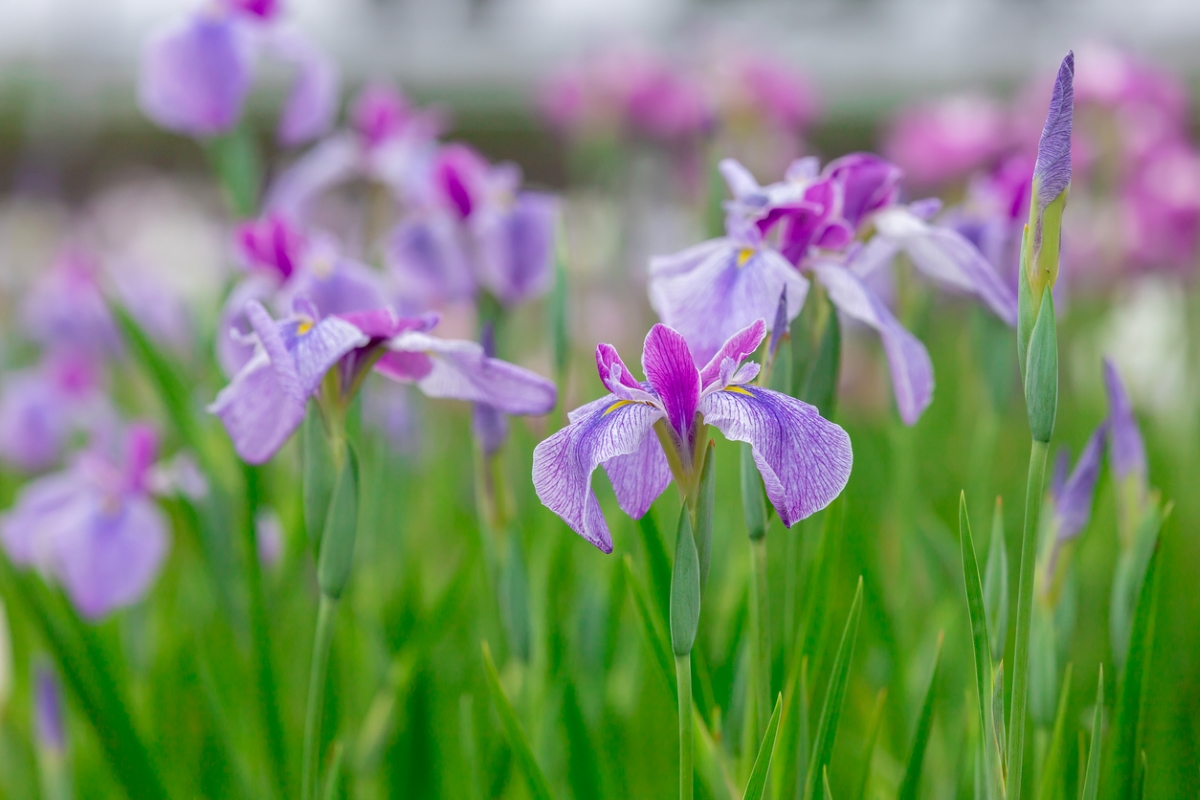
Irises are beautiful, colorful, and fragrant flowers. These eye-catching deer-resistant perennials typically bloom during May in zones 3 to 10. While humans tend to enjoy the aromatic nature of these flowers, the scent is off-putting to deer, so they do not like eating them. In addition to the fragrance, some iris varieties have tough and sharp sword-shaped leaves, making them less desirable for deer to consume.
Lamb’s Ear (Stachys byzantina)
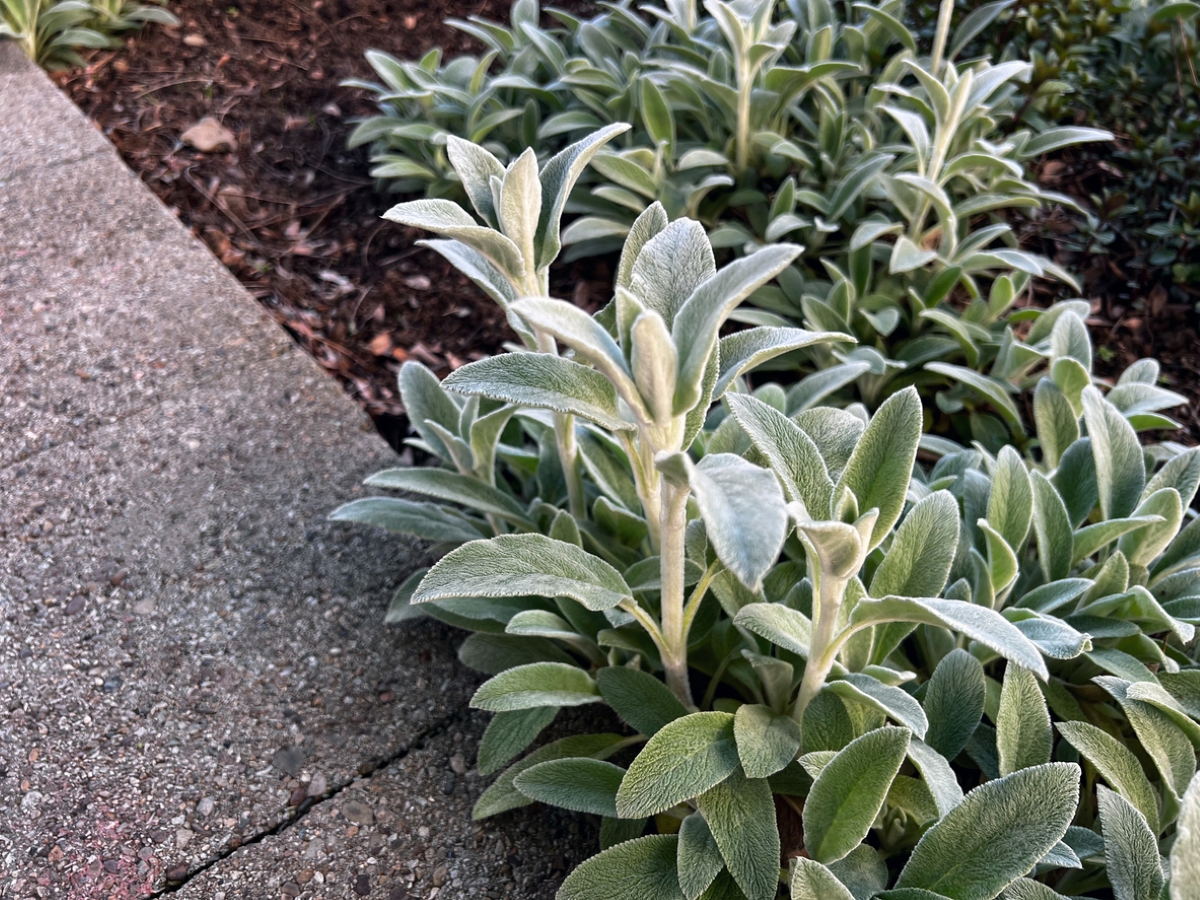
Although it attracts butterflies and hummingbirds, lamb’s ear will not attract deer. Deer don’t like the fuzzy and velvety leaves in their mouths, and the spiky flowers make it tough to avoid being pricked while grazing.
However, the fuzzy, felted foliage of lamb’s ear makes it a popular perennial groundcover. It’s happy in hot, dry weather in zones 4 through 8. Plant it in beds and borders, and you’ll enjoy both its textured leaves and spiky flowers.
Deer-Resistant Shrubs
Whether you want to make a border around your yard or garden, deer-resistant shrubs can help make your property less appealing to these animals. Make sure to select shrubs on this list, as there are some shrubs that deer still find appetizing.
Boxwood (Buxus sempervirens)
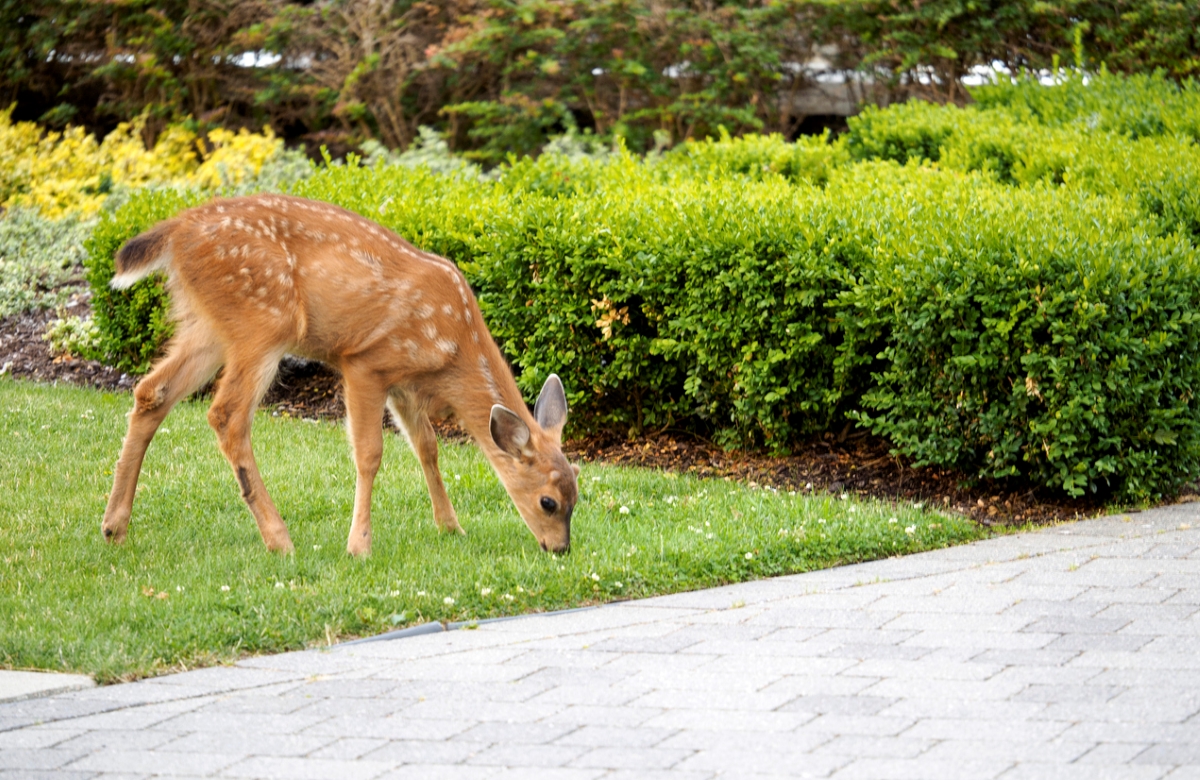
With glossy evergreen leaves that contain toxic and bitter-tasting alkaloids for deer, boxwood is a popular landscaping choice among gardeners who want to avoid grazing deer. The odor of boxwood also helps deter deer.
Plant one alone or group several together to form a hedge. Boxwood’s small leaves and dense structure also make it excellent for shaping, so you can use it in patterned and topiary designs.
Butterfly bush (Buddleja davidii)
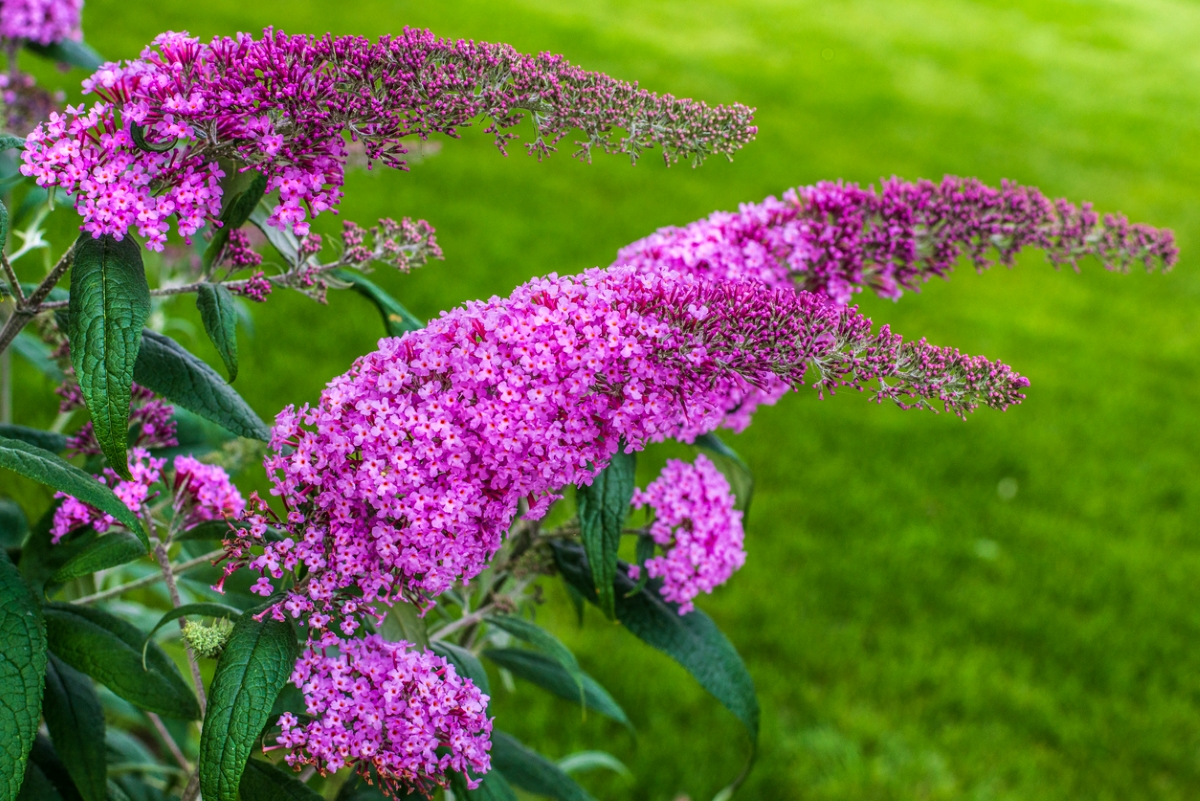
Butterfly bush is a fragrant, showy, and easy-to-grow shrub with a strong scent that deer don’t enjoy. Even though the deer can resist the fruity-smelling flowers, the blooms still attract butterflies and hummingbirds.
Plant it in early spring, and it will soon tower 5 to 10 feet tall. In warmer climates, butterfly bush can grow as tall as a tree. Plus, if deer do take a nibble, the plant can grow back.
Japanese Andromeda (Pieris japonica)
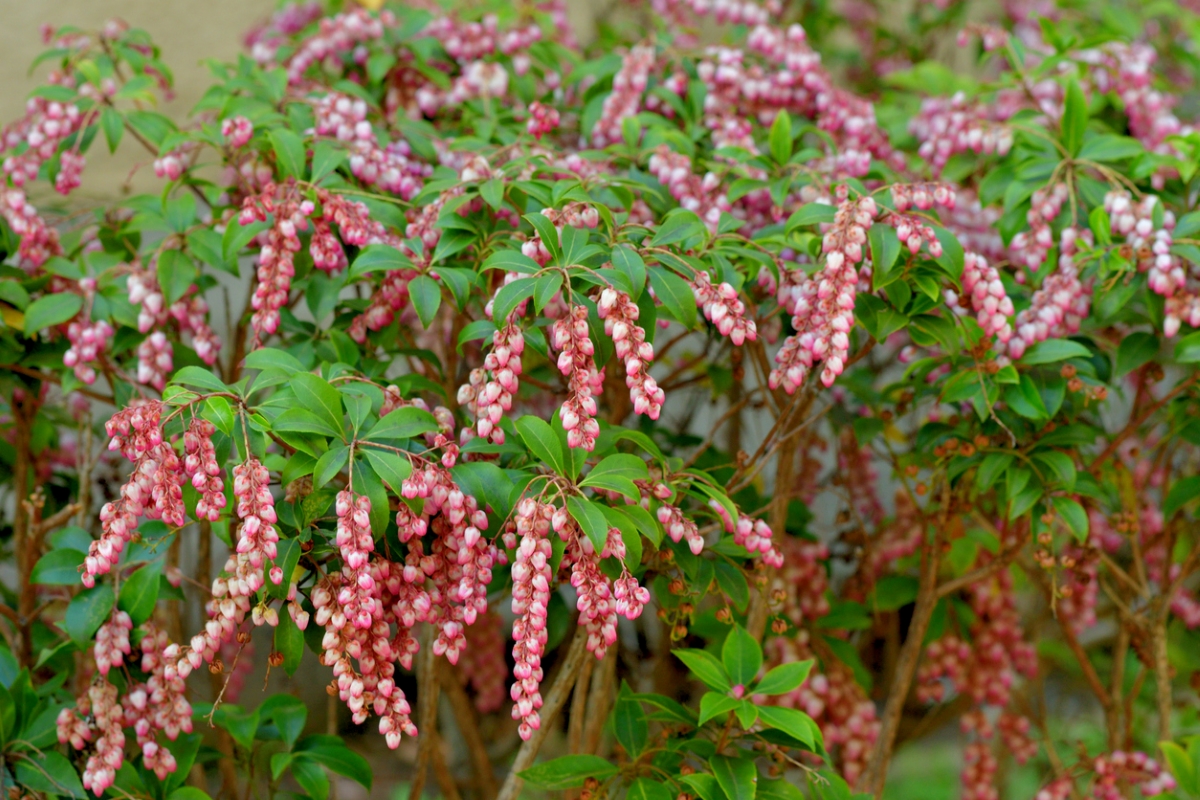
Well suited for full sun to part shade, the stunning Japanese andromeda is a little more finicky than others on this list, and it needs a lot of attention and care. Japanese Pieris is an evergreen shrub that grows drooping white flowers in the spring and leaves that stay green year-round.
These flowers bloom in April, and the plant grows best in zones 5 to 8. Deer rarely eat these shrubs because their leaves and branches contain poisonous compounds that they try to avoid.
Ninebark (Physocarpus opulifolius)
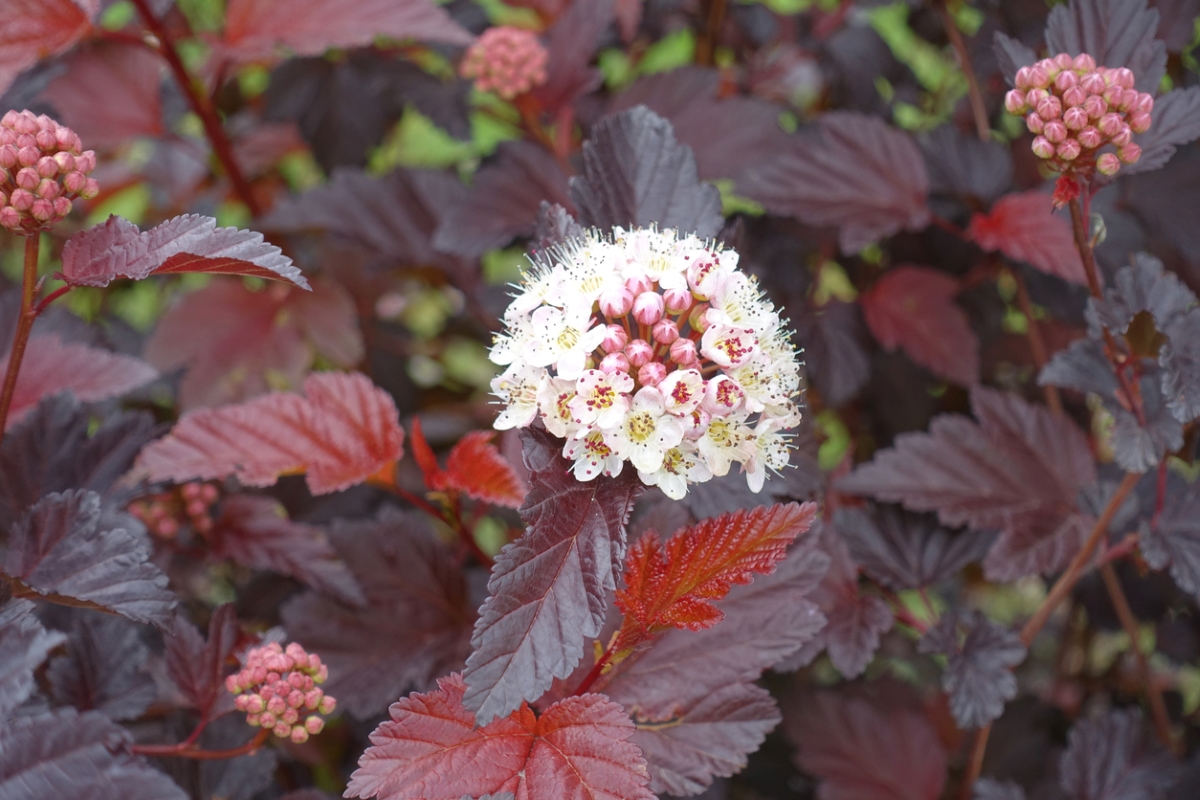
Deer seldom damage ninebark shrubs. Ninebark is a deciduous shrub that blooms small pink or white flowers with five petals in the spring. Then it shows off beautiful layers of bark during the winter months—a woody texture less appealing to a deer’s palate.
This plant blooms from May to June and does well in zones 2 to 8. The beautiful flowers are also a great source of nectar for pollinators, the creatures you actually want in your backyard.
Panicle Hydrangea (Hydrangea paniculata)
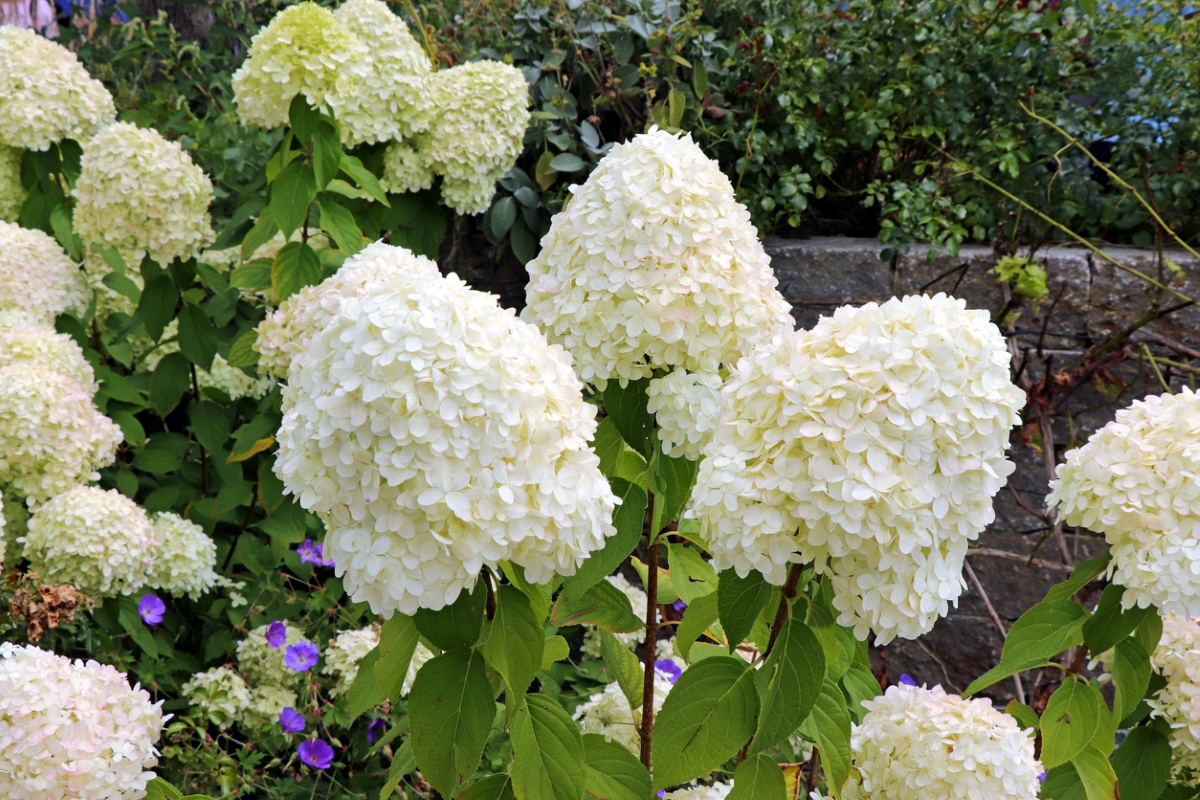
You may have heard that though it’s not a favorite food, deer still nibble away at hydrangeas, but the panicle hydrangea is more off-putting than other types for these wild animals. The deciduous shrub is known for its dark green leaves and conical-shaped flower bunches.
This variety is a charming accent shrub because of its beautiful, dainty flowers. The part that turns deer off is the plant’s woody stalks. This shrub blooms from July to September, in zones 3 to 8, and is suited for full sun to part shade.
Red Twig Dogwood (Cornus sericea)
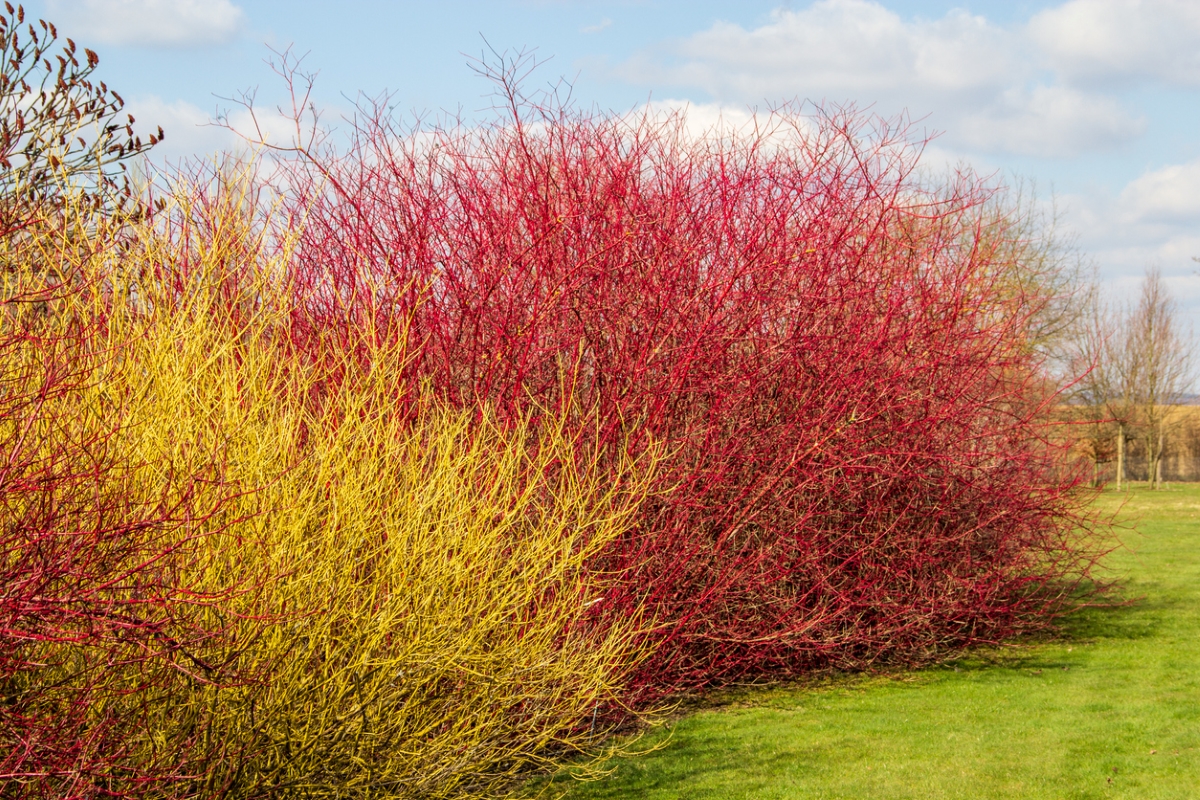
Red twig dogwood is a deciduous shrub that grows in zone 3 to 7 and works as an excellent shrub border around a garden. This plant has medium dark green leaves that can turn red to orange depending on the season, hence the name.
In the spring, it has small white flower clusters that give way to summer drupes that birds enjoy. Red twig dogwood is seldom severely damaged by deer, though they may nibble on it if there is a lack of food options in the area.
RELATED: The Dos and Don’ts of Planting Ground Cover
Deer-Resistant Shade Plants
Whether under a canopy of trees or in the forest, deer are no strangers to sniffing out shade-loving plants. Make sure to plant deer-resistant shade plants, like the following, in your yard to encourage deer to seek food elsewhere.
American Holly (Ilex opaca)
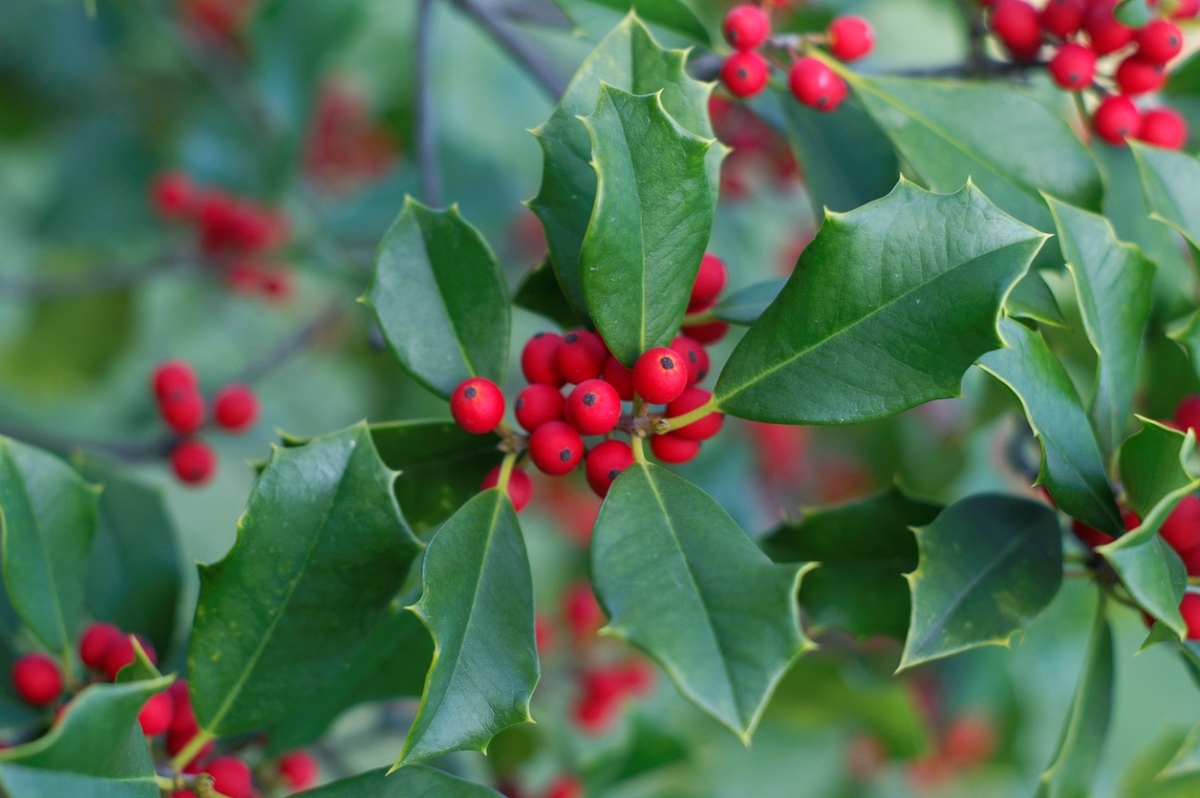
A cheery staple of Christmastime decor, American holly is also beautiful in a landscape and not desired by deer. They don’t enjoy the tough spiny leaves and toxic berries. However, not all holly is passed over by deer; deer are known to enjoy blue holly.
Prolific in zones 5 through 9, holly can reach up to 50 feet in height or be pruned into an attractive hedge. If you want those beautiful red berries, plant four or more to cross-pollinate.
Bleeding Heart (Lamprocapnos spectabilis)
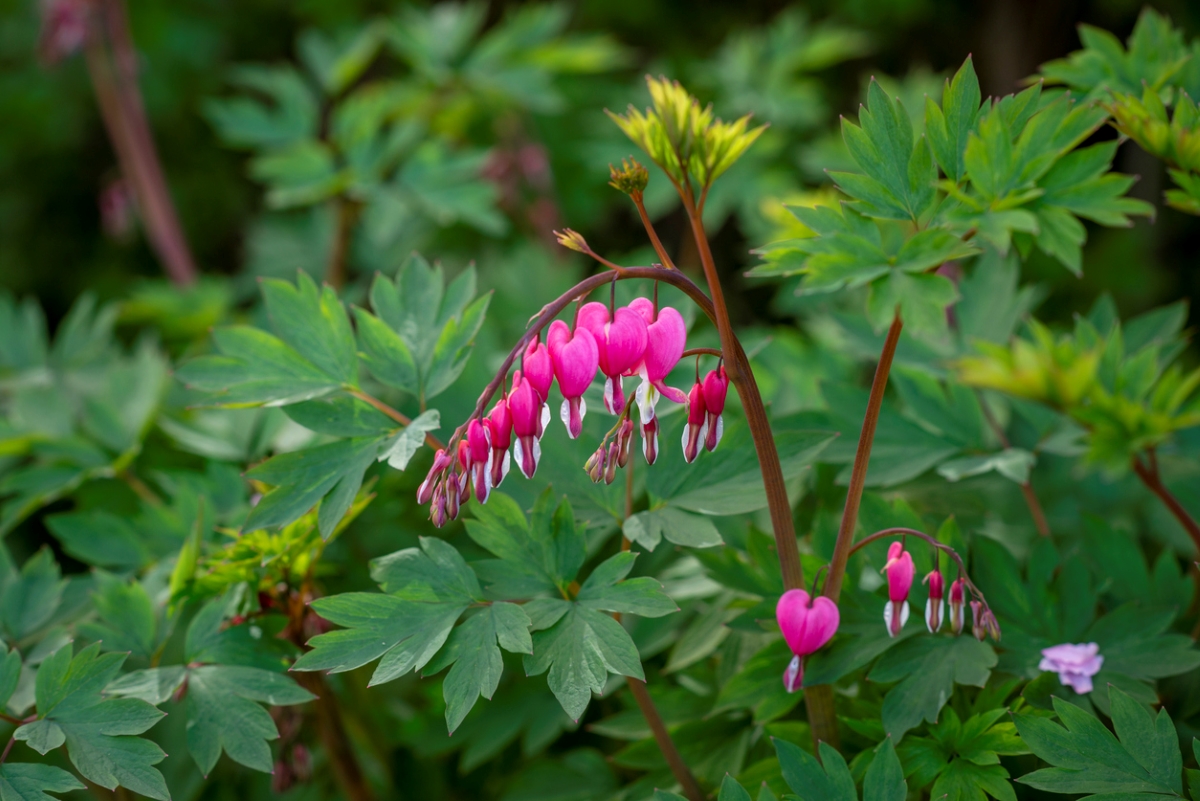
Bleeding heart perennials are a natural deer deterrent because all parts of the plant are poisonous if ingested. Best for zones 3 to 9, bleeding hearts need partial to full shade to thrive.
This plant blooms beautiful heart-shaped, puffed pink flowers with white inner petals that dangle with arching stems, making them a gorgeous addition to a backyard or patio space. The foliage goes dormant, so bleeding hearts don’t fill the role of the dominant plant in a garden as it will look very sparse most of the year.
Ferns (Pteridophyta)
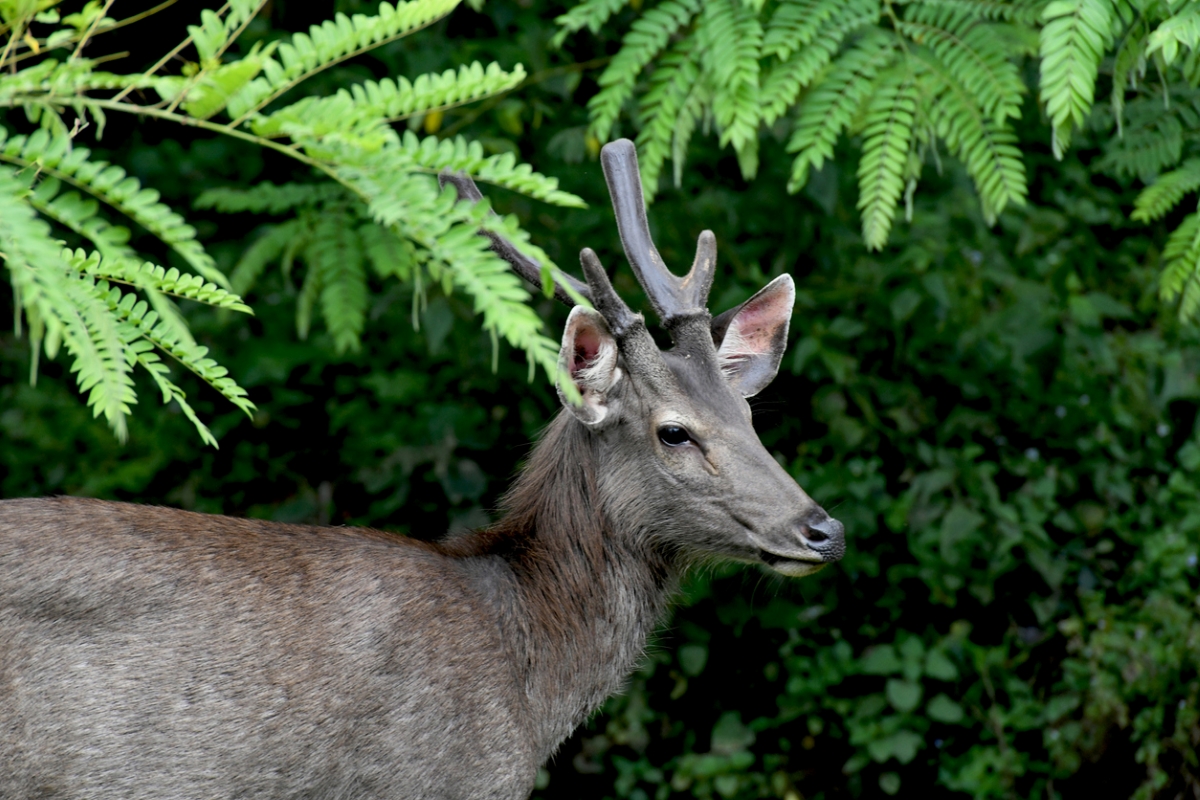
Ferns are diverse, flowerless deer-resistant plants with many varieties. Some have vines, and others are leafy or filmy. They are a great way to add foliage to a patio, balcony, or yard. Ferns grow in various environments, requiring little maintenance in their native habitats.
Deer don’t tend to eat ferns, likely because some of these plant species are toxic to animals. This may make a fern garden an excellent option for those living in deer-infested areas.
Hellebores (Helleborus orientalis)
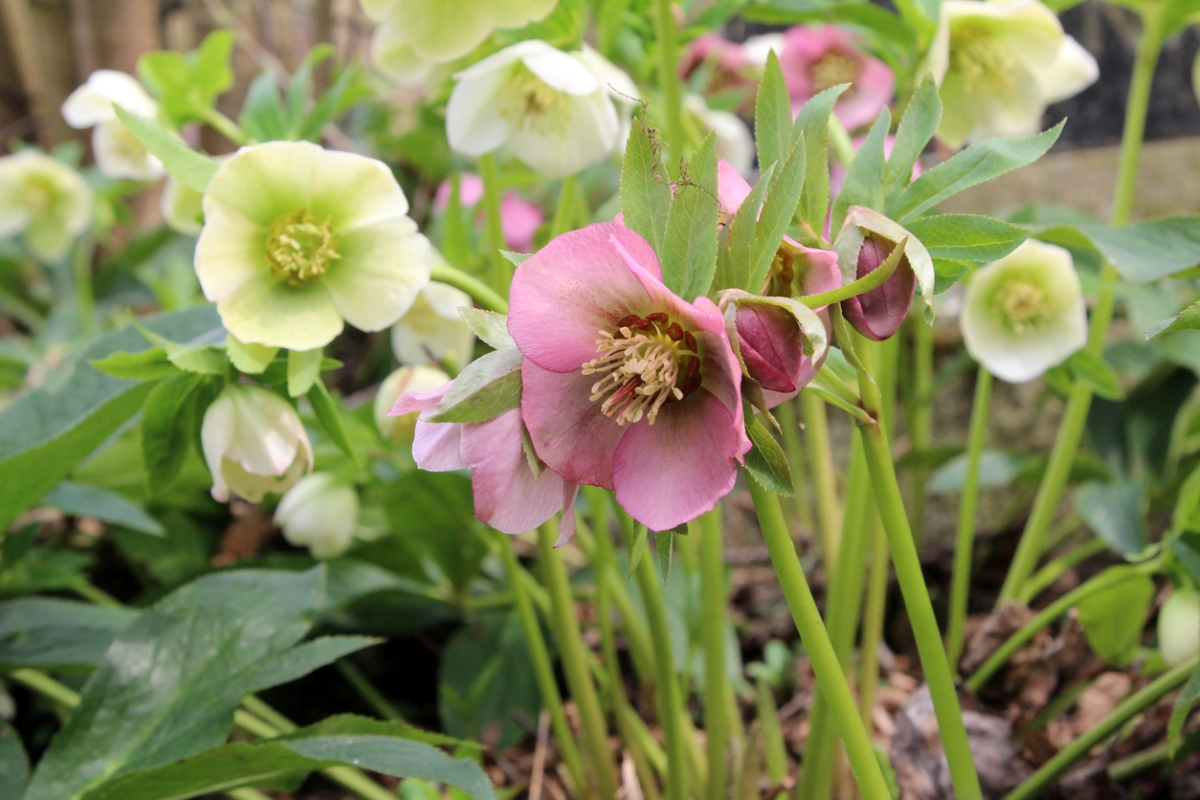
Hellebore is an excellent deer deterrent because its roots and leaves are toxic. Deer have learned it’s best to steer clear of these plants. Hellebores are perennial flowering plants that grow in zones 4 to 9, blooming in April with white-to-pink or rose-to-purple flowers. They grow in part shade to full sun. Hellebore slowly spreads with self-seeding and will form a ground cover in ideal conditions.
Pachysandra (Pachysandra terminalis)
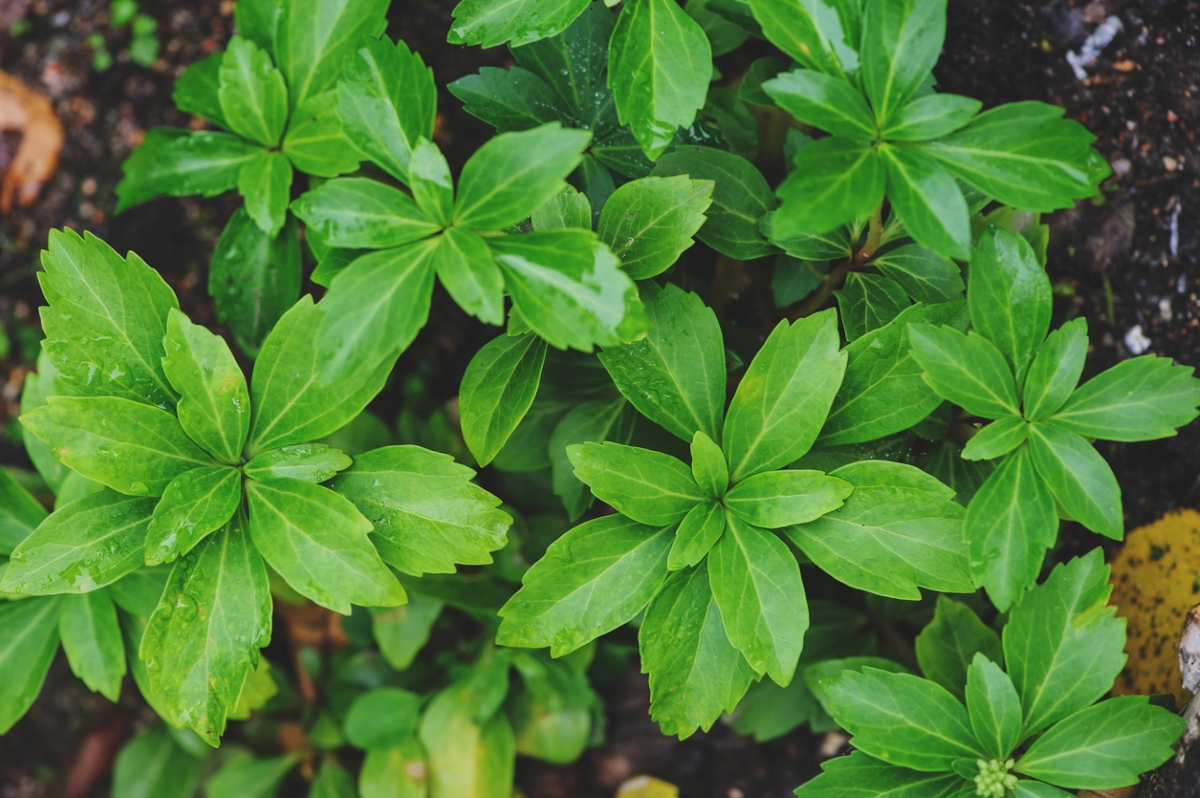
If you have a shady spot in need of groundcover and want to deter deer, pachysandra may become your best friend. Deer do not enjoy its tough hard-to-digest leaves.
Evergreen and low maintenance, pachysandra produces pretty white flowers in early spring. Plant it, and it will grow rapidly into a lush, green, deer-resistant carpet.
Which Plants Do Deer Like to Eat?
Though it may seem like deer like to eat virtually all plants and flowers, they gravitate to some more than others. Here are a few characteristics of plants that deer like to eat:
- New shrubs grown with fertilizer have a salty taste deer enjoy.
- Most plants that humans grow in their yards for personal consumption. If you want to eat it, chances are a deer will want to eat it, too. (Protect your apple trees, chokecherries, blueberries, legumes, and other fruit and vegetables.)
- Soft, tender leaves or flowers, such as grasses, lilies, orchids, hostas, asters, and more are quite desirable.
Which Plants Do Deer Hate the Most?
There are some plants that deer will only eat if there are no other options. The plants that deer hate the most have a lot of similar qualities:
- A strong odor or taste, such as strongly scented irises
- Hard or sharp features like thorns and spires that would make it difficult and uncomfortable to eat (such as the bark on ninebark)
- Fuzzy leaves or stems, like lamb’s ear
- Tough or difficult-to-eat leaves, such as American holly
- Toxic plants, like bleeding hearts
Final Thoughts
By strategically planting deer-resistant plants, florals, and greenery, deer may be more inclined to go elsewhere for a meal.
If deer consistently return to your garden and eat your plants, provide them with a deer feeder elsewhere on your property to try to prevent them from destroying your garden. If all else fails, spray a deer repellent on your property. It’s also pretty easy to make homemade deer deterrent to keep these animals away from your crops.
These tips and plants help keep deer out of your garden so the only one enjoying the fruit of your labor is you!
